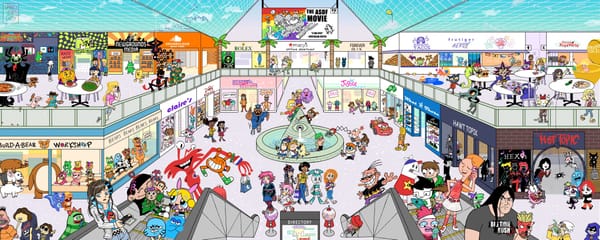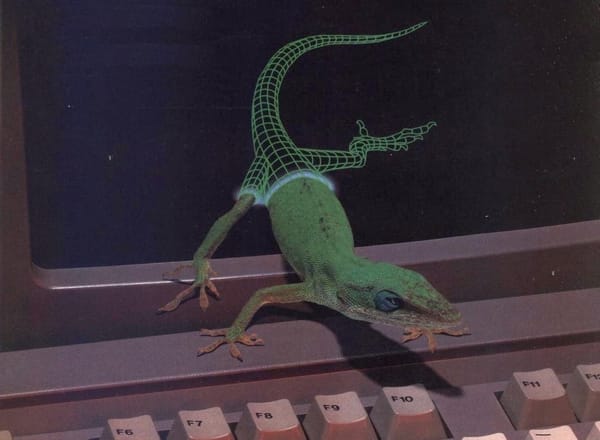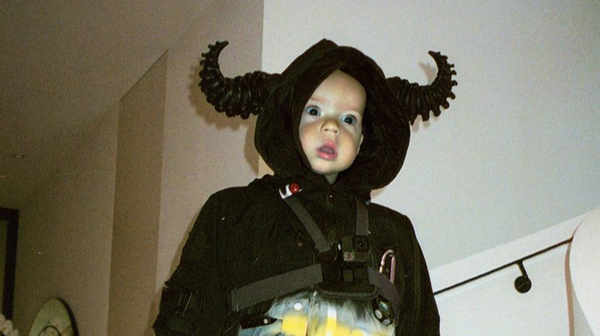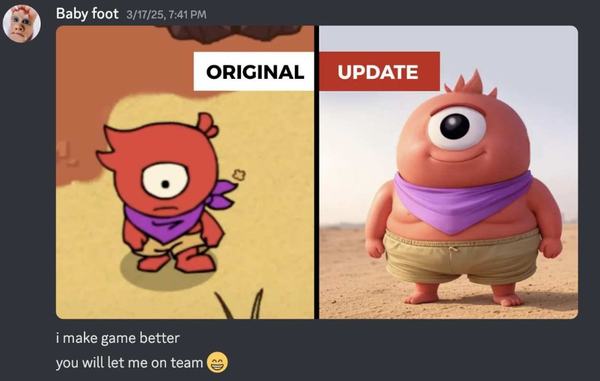An interview with the big boss of MGS fan animations
Parametric Avocado explains how he riffs on Kojima classics.
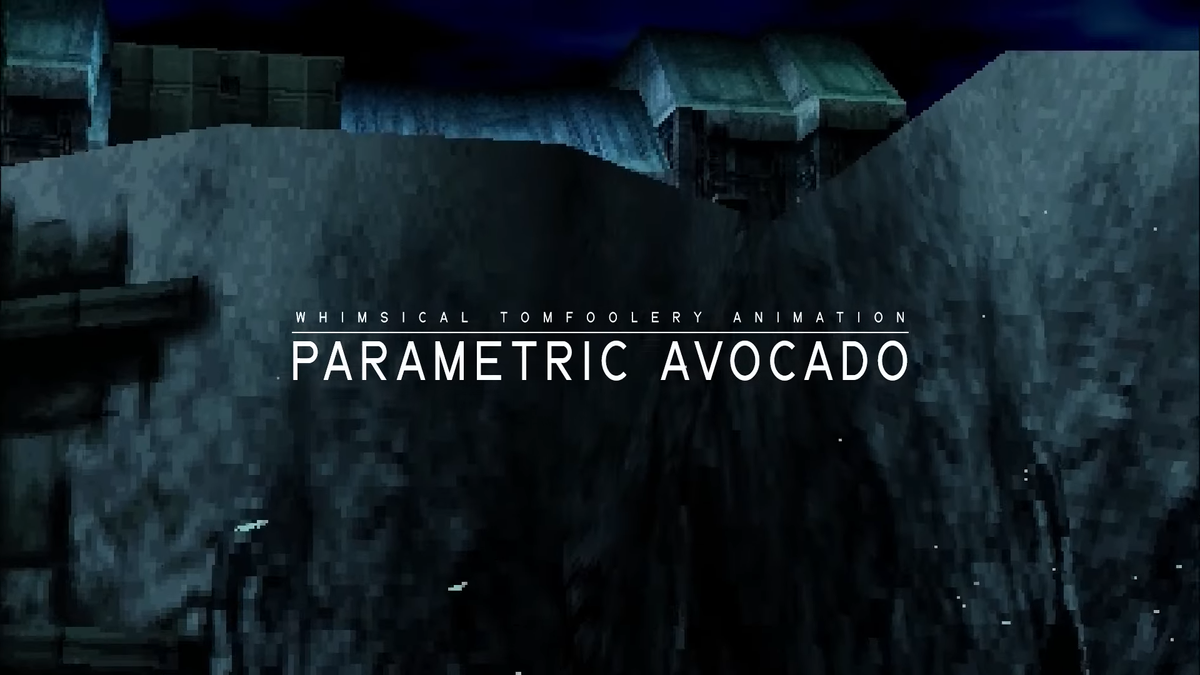
By Eric Sams
EX Note: We're finally running an illuminating interview that our buddy Eric Sams did with animator/developer Parametric Avocado last year. He answered a question we've had for a long time: what goes into making videos like this one?
Watching Parametric Avocado’s animations leaves me with the sense, not atypical in absurdist meme culture, that I’m getting most of the joke but not all of it. Funny, topical, and meticulously crafted, their work is a reverent pastiche of the aging Metal Gear Solid franchise, repurposing the visual vocabulary of the classic games for bits that play at the speed of the modern internet. The animations are so packed with logic-resistant quirks and resonant details that it’s nearly impossible to catch every reference, much less imagine the process of combining them.
Witness Solid Snake demanding his right to make “one Codec call” while being hopelessly bodied by DBZ ultra-chad Broly, or Otacon drifting down a bustling city street in a Honda Civic sedan. At their best, the videos successfully mimic (or at least harmonize with) the uncanny logic of Hideo Kojima himself, whose Metal Gear Solid 2 foresaw an era of memetic disorientation that would threaten humanity’s ability to make meaning. More recently, Kojima seems set on repudiating his own vision, insisting that “strands” of human connection represent our ticket out of the future he prophesied.
So which future are we headed for? MGS2’s hall of mirrors, or the tenacious human connections of Death Stranding, or something else? Parametric doesn’t claim to be certain, insisting they’re just a “chaotic kid playing with things.” We sat down with them for a wide-ranging conversation about their creative process, the sources of their inspiration, and why their next big project might be an MGS cover album of Nirvana’s Nevermind.
This conversation has been edited for clarity and length.
EX: How did you get started making videos?
Parametric Avocado: This is a hobby for me. I'm trying not to get too serious about it, because I'm gonna burn out. I already have a nine-to-five as a game dev. I've always liked to delve into explorations of animation, drawing and 3D modeling. Whenever you want to develop a game or project in the interest of learning, for example, you end up using templates from somewhere else. But I am so curious that I could never just get something that's already ready made for me.
EX: Where do you get the models for your animations? It sounds like you build them?
PA: I became famous because of the animations that I did about MGS, and those models particularly are reverse engineered — extracted from the games. But PlayStation and PlayStation 2 games are arcane things. Each game has its own weird way of storing things. There were no user-facing engines. Studios usually used their own in-house engines for making stuff. The formula is proprietary while it is somehow standardized. As the industry matured, we started using the same things over and over. As things become more complex it becomes harder and more expensive to invent new stuff.
So yeah, I obtained the models from the games in that case. But I do a lot of work in order to get them ready for animation and to recreate the look of the games correctly, which is something that is called Machinima-like animation. I don't think that’s the right term because Machinima was intended to be something that players do using pantomime with avatars inside the game. In Red Versus Blue, those characters were actually players just moving their cameras around and having the characters bob their heads as they talk and stuff like that. That's happening in engine. That's happening inside of Halo. In my case, I'm using an animation package.
EX: When you say you do a lot of work on the models. Can you break down a bit of what that work is, what tools you use?
PA: There's this developer who's making tools for the decoding and exporting the models outside of the PlayStation games. What it does is picks up the data that's stored in the game and transforms it into a more universal format, which is just the FBX format that the game industry is very accustomed to. So most of the bones are in place, most of the textures are there but the materials are not properly set out. I have to figure out which things are supposed to be transparent, which things are supposed to be opaque, if there are any supporting textures and not just the base color ones, etc. Sometimes there are missing bones and I have to figure that out.
The bones for the characters are not usually set up so you can animate comfortably with them because they're just the form bones. In the animation industry it’s very common to use control rigs, which are a whole system on top of the bones that actually move the parts of the body in order to create more complex body mechanics, and to make certain things like walking or running or using hands — placing hands on top of objects or solid stuff. Those kinds of things make animation easier, and that’s the thing that I need to use on top of the models that come from the game. And this is something that's common. It's the usual workflow. You don't just pick up a model and animate it because it's gonna look stiff. It's gonna look weird if you don't make a control rig for it.
EX: Got it. So you essentially build a control rig.
PA: Yeah, and then I figure out what the heck is going on with the model? Perhaps the meshes are not in the right position or the right pose or the texture isn’t right. So the materials don't seem to make sense. You just put it in Blender and it looks like crap and you have to figure it out from there. I used to have a very ugly screenshot of an example of a model of a building that I ripped from Metal Gear Solid 3. It’s just a mess of triangles. It's just not understandable by humans. But I've grown so accustomed to it that I could take a look at it [and] understand what was there.
EX: So there's a considerable amount of work to get these models ready for a video. Talk about the process from concept all the way to execution. What do you do first?
PA: It usually starts with a pun. I'm a very punny person. Sometimes it's just a play on words and sometimes it's a song that I heard that sounds a lot like another song. The punchline is that you were expecting something and then you get ruffled into something else. I have a bunch of videos that are just bait-and–switch. You think you're looking at the actual footage from the game but you're actually looking at one of my animations that happens to look a lot like it, and then it diverges at some point and it takes viewers a breath to catch up. It usually goes like that.
So the inspiration comes from everywhere. I used to get very flustered when people tell me how good my stuff is or how genuine it looks. I tend to not be able to process all that information at the same time. So when people ask me: ”How do you get these things done?” I tend to not give a good answer. So this is an exception. Basically, I make something that I would like to show myself or show a friend that I know they’re gonna love.
EX: Do you often have an idea and immediately go into execution mode, or do you sort of keep a bank of ideas and then marinate for a bit then go back and choose?
PA: It really depends on the difficulty. If I think of a funny video that I want to make but I realize that I don't even have the assets for it, and I don't even know how to how to rip them from the games, and I don't even know how complex the models are going to be, and I'm going to have to deal with all that…. For example, everything related to Metal Gear Solid 4 right now goes into a Trello. I have a massive Trello where I store my ideas. But if it's something that I know that I can, like, superimpose something then I know I can do a video because I already have resources for that. I have the sounds. I know how to put the stuff together. [Like adding] a bunch of models on top of footage of LeBron James doing a silly ritual before a match.
EX: Do you think there will be a point where you circle back to some of those ideas as you continue to do this and maybe get more comfortable with your process?
PA: As a matter of fact, last week, I finally took the time to sit down and collaborate with a Patreon of tool makers that make tools to rip assets from games. Before that, I had no way to access models from, say, the GameCube remake of Metal Gear Solid 1. That opens up a whole column in my Trello. I want to make animations related to Metal Gear Solid 1 that require more expressive models than the ones from the PlayStation version of the game. They wouldn’t be able to do the kind of expressions I want for a dialog-heavy thing. So, that’s something that I unlocked just a few weeks ago.
A few months ago I finally had the time to do something that I knew I was gonna have to do: I started exploring assets inside of MGS1 in order to pick apart the sound effects that make up the soundtrack of the game. That way I was able to recreate the instruments they used in the game. Now I am able to use them to make any kind of thing. One thing I was thinking of is there are entire remakes of, say, an album by Nirvana but with the instruments from Super Mario 64. I intend to do the same thing but with Metal Gear Solid instruments. The key goal there is to release the instruments so that people can make use of them. Sometimes I do that. I try to convert my tools and my process into something someone else can use. Give back to the community.
EX: So you're into the open source movement and developing community tools?
PA: Open source is a complicated thing. I'm more of a chaotic kid just playing with things that perhaps are legally complicated. I'm just playing. I'm just playing.
I grew up in a country and in a time where piracy was a widespread thing. In Argentina we only recently got legal access to things because previously corporations didn't give a crap. They didn't bring the stuff here. We had to pirate it. It’s not a political statement but I definitely know I'm being a tad irresponsible about the intellectual properties and the legality of this thing. I'm just having fun.
EX: Are there creators out there who inspire you? Either they give you ideas or you feel like your work is in conversation with their work?
PA: I’ve had some interactions with certain voice actors from the community, mostly from Metal Gear Solid Twitter. As I mentioned before, I have a reference to Solid jj. I have made a collaboration with Tom Shalk and with funnywes. I've always been inspired by animators who do stuff with Team Fortress 2 characters in SFM and Gary’s Mod. I don't have a direct link to them. I don't talk to those people but I do enjoy the work of Kostamoinen a lot. Oh! And ElTorro64Rus! That one is massive. The animation quality is just insane and the humor is completely chaotic.
I'm a hobbyist animator, and these people are usually trying to become professionals. They're very serious about their skills and the stuff that they do. Actually, I lied. I guess I can actually consider myself professional because I have been doing animations for a game dev as a freelance. But for linear format content I'm most definitely not professional. My videos are completely chaotic and my rates are disastrous. It looks funny. I like the homemade, imperfect look of Garry’s Mod shorts.
EX: What are your favorite videos that you’ve made?
PA: I try not to play favorites. I've seen the Metal Gear Solid one, the famous one, so many times that I started kind of seeing the defects in there. The telltale signs of me struggling with the exploration of new tools and new models. So that one's definitely not my favorite. But I'm still amazed that I pulled it off.
I would say my most recent favorite video is the one that I made for April 30th. The one where Otacon drifts into the scene in a Honda Civic. Actually, that's a reference to Solid jj’s video in which Snake just starts providing Raiden with supplies and things. One of the things that he supplies him with is a Honda Civic sedan that is somehow in there below sea level. It’s somehow parked inside of Arsenal Gear. It’s so funny. I like how that one came out because it's way more polished than the previous ones. I was no longer just struggling with Metal Gear Solid 2 models which are a bit more complex. The animation is more demanding.
EX: How does your video production work intersect with your game development work?
PA: Hmmm. It's kind of tough to describe this. As a game dev I learn from everything. Personally, I'm very into the games from the early 2000s because there was a certain magic in there that quite swiftly got lost as technology blew up, and the industry exploded in scale, and now everything takes five or eight years to get done. I yearn for a future in which we have AAAs that continue to use all those old techniques. It would be interesting because you’d get to see very talented people working with very specific limitations, but it also makes things cheaper and it makes the production process shorter. So you can either do more ambitious things, or you can just do very polished things within a time frame.
It’s a mixture of learning new processes and things that are related to the work that I do in my nine-to-five. I'm a senior Unity developer. I’ve learned lots of things making YouTube videos. Even just deep-diving into the files of a 20-year-old game, taking a look at the structure of things, taking a look at the way that effects are done, the way that the game logic is programmed. So just by looking at the games I learn a lot because one of the things that I do is I'm a tech artist. Tech artists take care of integrating or bridging the gap between artists and programmers. I've always been obsessed by the evolution of graphics in games, and by the techniques that came and went, and new stuff that comes up every time we have a generational leap in graphics technologies.
So, yeah, I would say the two types of work intersect. It helps. It also refreshes my brain a little bit. Otherwise (sighs) I love to make use of my free time to work on projects, but being the workaholic game dev that I am I would have ended up programming for another project, a personal thing. Sometimes I wish I had time to do that, but I find just plain animating to be a bit more the “detox work.“
EX: I agree about the magic of early 2000s games. What is it about Metal Gear Solid in particular that you think makes it so amenable to this kind of animation and so relevant to the internet even decades after its initial release?
PA: Those games were state of the art at the moment, but also they aged well. Because they’re not just some dumb joker with cardboard politics. They have a very intentional message. They have artistic choices. They're not just aiming for the most realistic thing you can look at at the time, but they're also trying to have a look, to have cinema, if you want to call it that. Especially coming from this guy [Kojima] who's so obsessed. He really wants to be in the film industry but he continues to work on games. So, yeah, (laughing) being the pretentious wannabe that he sometimes can be.
So they swung and they hit. They hit a bunch of things. That's probably why it has transcended this long and we're having a revival of sorts. Partly that just happened naturally, because as we get older we start like: “Hey, remember this thing?” That’s a very good prompt for a video essay. Somebody is going to talk about how profound Metal Gear Solid 2 was or how action-packed Metal Gear Rising was. And remember the music? It was banger. Suddenly we're starting to get a new re-appreciation of things. I passively witnessed the hype of people about Metal Gear Rising two or three years ago because of a Max0r video that everyone was talking about. I wasn't particularly thinking directly about it but somehow it just manifested collectively, I guess.
EX: What I see your work doing is taking that early 2000s aesthetic and marrying it to content that’s ultra current, almost like there’s an archival or preservationist function to your stuff. Is that part of your creative impulse?
PA: I think it's, “Here's this thing that I really appreciate from the past combined with stuff that I really appreciate from the present.“ Just the sheer absurdity of humor today, shit posts and YouTube poops and that kind of stuff. It really makes me laugh a lot. I just can't help but try to do that. Sometimes it feels like I'm trying to chase a trend to maximize my numbers like I did with the Lebron James video. I just started seeing it everywhere and my brain just did the connection. I spent the whole day just working on it. I wasn't trying to, like, chase the trend. It made sense in my brain. (Long pause).
On one side it's just, ”Well, if we're gonna make a video about this thing using this character in this particular way that sort of relates to the way that they are supposed to be? But in a cartoonish kind of way. Basically, you pick the relationship between two characters, and you realize that perhaps one is attracted to another, or perhaps one is the leader and the other one’s the follower, and suddenly you pick that particular trait between them and you can relate that to something else. That's not a formula I use, but it's. . . Actually, after the fact, I realize that sometimes that’s the process that I do.
EX: One of the things that people have really latched on to is the speech at the end of Metal Gear Solid foretelling a deluge of information. They see that as a prediction of social media and the fire hose nature of the internet now.
Do you think Kojima is an internet prophet, or are people making too big of a deal out of that one speech?
PA: Kojima has a curse related to his prophetic things. First he thought about the ending for MGS2, which I think was always going to be like that. Then they also went with the theme of New York and the destruction of the [city]. They had to change [the game] a mere month before release? Then he did the whole isolation thing with Death Stranding and that also blew up in the face of everyone because just a few months after Death Stranding hit we also got the Covid-19 pandemic and those crazy years.
EX: So maybe he's more of a prophet in general than an internet prophet.
PA: Well, he was quoted as saying that he changed the story for Death Stranding 2 because, if it became true, it would be terrible.
I don't think he is a prophet or anything. Perhaps he reads current events well enough and is able to extrapolate ”science-fiction” enough that it seems plausible and it ends up making sense. The rules that we have for events at different scales always apply the same way. So something that happens macro also happens micro. So you can somewhat predict things. Then you just have to have a lot of luck, I think. I don't like to attribute all of that magical power, creative ability, hindsight–whatever you want to call it–just to him himself [but also to] whoever he teams up with when it comes to writing the stories.


